Peter Dornauf – 27 July, 2014
Besides a pared down look and absence of colour, another pervasive quality that the works have in common is fragility and delicacy where materiality has been stretched to almost breaking point. And the material used in the construction of the pieces also displays a collective premise in the banality and modesty of the material employed: rubbish from bins, recycled wood, muslin, blu-tack and cotton.
Hamilton
Beaudean Cotton, Simon Blanchett, Kieran Horner
Thirsty
Curated by Karl Bayly
19 July - 2 August 2014
Walking into the gallery space of a curated show, like the one currently at Pilot in Hamilton, it is not always immediately apparent what links exist between the pieces and how they pull together - given that the works in this showing are so disparate. What this particular exhibition amounts to is simply three ‘sculptures’ and three ‘paintings’ (paintings in the loosest sense of the word), presented to the viewer with a sparseness of hanging. Added to that pared-down look is a minimalist aesthetic employed in the pieces themselves, involving an almost complete absence of colour other than white, cream and the merest hint of blue.
Fragility and delicacy are another pervasive quality that the works have in common where materiality has been stretched to almost breaking point. And the material used in the construction of the pieces also displays a collective premise in the banality and modesty of the material employed: rubbish from bins, recycled wood, muslin, blu-tack and cotton.
Spend some time with the works however and certain striking resemblances beyond those already mentioned, start to become apparent.
It begins with the work of Tauranga-based Beaudean Cotton, and his installation piece entitled, Molecule. This delicate spider-web-like creation is made up of the simplest of materials: light blue thread and blu-tack. From such humble entities a thing of beauty is realized that has the look of Paul Klee taking a line for a walk in geometric 3D space. It’s as if Miro’s ciphers (line and black dot) came to life and leapt across the corner of the gallery trailing a cubist jungle of crosshatched lace with it, with all the appearance of an Alexander Calder mobile made immobile. Or, to try again, it’s like something out of a Bauhaus aesthetic, meeting up with a nineteen Fifties pattern design with influence from the beginnings of the space age.
This complex configuration of thread supported by pliable adhesive becomes a diagrammatic representation of a scientific model for the building blocks of life, an atomic look that was part of the signature style of the fifties which also contributed to and pervaded modernist optimism, finding its way into textile design, furnishings and finally suburban appliances of the period. With it came excessive utopian hopes and a vision of the future where everything would be brighter and better.
However Cotton’s use of such modest, flimsy and ‘temporary’ materials brings a touch of irony to the project, lending a sense of diffidence and reserve to the allusive resonance it sets up that are more in keeping with a less hairy-chested contemporary appreciation of possibilities; the moderation of overreached dreams.
Cotton conjures modernist images and aspirations then pokes gentle fun at the imaginings but without discounting them. The work is full of energy, vitality and dynamism but it brings with it a sense of fragility, the feeling that the piece could break and unravel at any moment.
In its hesitant tenuousness it vaguely recalls Marcel Duchamp’s Mile of String installed at the New York Surrealist exhibition in 1942 where the former Dadaist fashioned a labyrinth of cord wound round screens and across the gallery space to deliberately impeded access to an exhibition of paintings.
Such complex weaving also reminds one of the dense woven strands of paint Jackson Pollock would configure only a few years later in the late forties and early fifties. Some have suggested that these wild and energetic braided works refer to images that capture the workings not of the subconscious mind but rather the tracks of subatomic particles. Molecule taps into the same reservoir of things from the decade that saw the first Sputnik launched, announcing the space race and with it the conquering spirit of modernism - to go where none had gone before. Molecule with its sky-blue adhesive and cord, with its balls of blu-tack threaded like tiny beads along the string at intervals, also suggests the night sky and its constellation of stars.
It’s at this point and in the work of the second artist, Simon Blanchett, painter and Pollock enthusiast, that we find some parallels with that of Cotton. Blanchett, in a move away from expressionist painting, engaged in the mundane process of paper-making from recycled paper, creating large ‘canvas’ sized pieces (1000mm x 1400mm ) which were then hung on the gallery wall.
When examined closely the surface reveals a constellation of deconstructed text hidden, embedded and scattered randomly throughout the interweaving shreds of paper that resemble a kind of minimalist Pollock. With its interlacing of discarded dissertations, compositions, essays and monographs rescued from Wintec rubbish bins, these compositions, three in number, with titles like Lured Siren, 9 Carat and Neapolitan, all play with the aesthetic of abstraction that again ties them back into the work of Cotton.
They become, in their speckled marble-like surfaces, like lunar landscapes which echo Molecule and its cosmic feel. Humble materials have been used in both while the idea of discarded material reborn through a remaking process figure in Molecule too in the reworking of old tropes where utopian reveries have been reconstituted into more modest hopes.
9 Carat speaks to the notion of revaluing and reassessing where the value of rubbish is reconsidered in the process of constructing a new material from the debris of the discarded. The resurrection of and reconstitution of what was once thought unworthy has its parallel in the way modernist visions have become playfully reconstructed in recent history which Cotton’s work explores. Fragments of text, bits of cigarette packets and gold foil peep through the surface of these ‘canvases’ like tiny stars in a porridge coloured universe that take the idea of quotation into an arena that has the appearance of a pared back site of some archaeological dig.
Lured Siren in its feathered edges and double layered hanging, where the facade section ‘floats’ ahead of the back panel, recalls in its compositional format the paintings of Mark Rothko and here we detect irony at work where the heroic is made precarious, vulnerable, ready to crumble.
The other artist in this trifecta is Kieran Horner whose sculptural creations hang suspended on wire from the ceiling of the gallery.
Mark 11, a 3D construction made of wood, copper nails and mutton cloth, has in its configuration affinities akin to the shapes of a shark, and because of the suspension, the famous Damien Hirst pickled shark suspended in a tank of formaldehyde comes immediately to mind. The subject for Hirst is death and its incomprehensibility to someone alive. Mutton cloth of course was once used to wrap meat in - dead bits of animal in other words which the consumer had probably no comprehension of either in its relation to the thought of death.
The cloth is stretched across a skeletal light wooden frame to form geometric outlines that echo the shapes of the stretched cord of Molecule. There is a feeling of lightness, buoyancy, fragility and transparency to this “shark” similar to that possessed in the work of the other two artists.
The recycled theme also is apparent in Horner, since the wood used is material taken from wooden pallets and reconstituted. Life, death and new life become intertwined in this less portentous Hirst-like construction.
The second work by Horner, titled Andy, is configured in the shape of a dart, triangular, winged, an air-borne boy’s toy, the muslin at full stretch, speaking of energy, the rocket, life itself as it is propelled through drama of existence, out into the heavens.
This show thus becomes a commentary about materials pushed to their limits, baring the weight of extremity. It is also about the dance of life and death - rubbish reborn, ideas reborn, about salvage, deconstruction and reconstruction, art regenerated from humble materials, about revitalization via quotation, about modesty, fragility and beauty made apparent from self-effacing resources.
Peter Dornauf
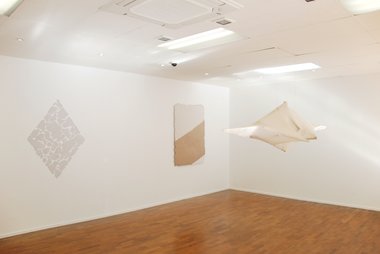

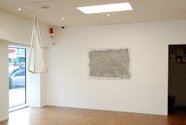
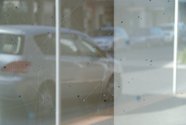

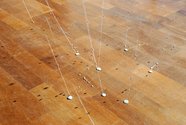

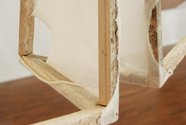
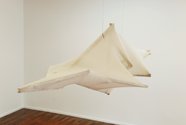
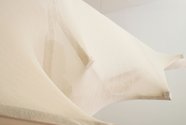

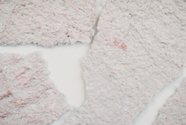
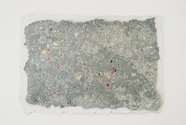
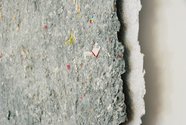

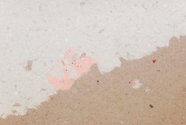
 Advertising in this column
Advertising in this column Two Rooms presents a program of residencies and projects
Two Rooms presents a program of residencies and projects



This Discussion has 0 comments.
Comment
Participate
Register to Participate.
Sign in
Sign in to an existing account.